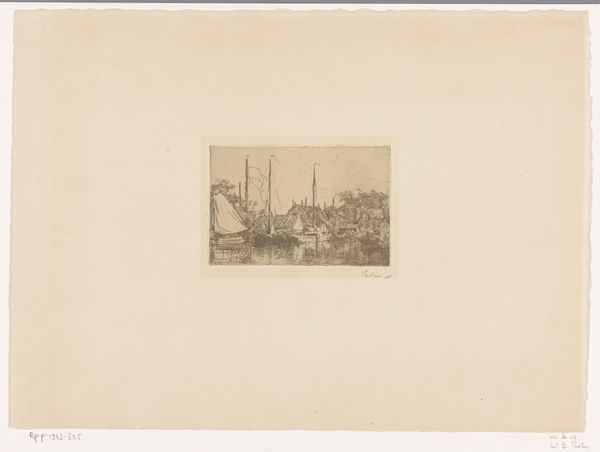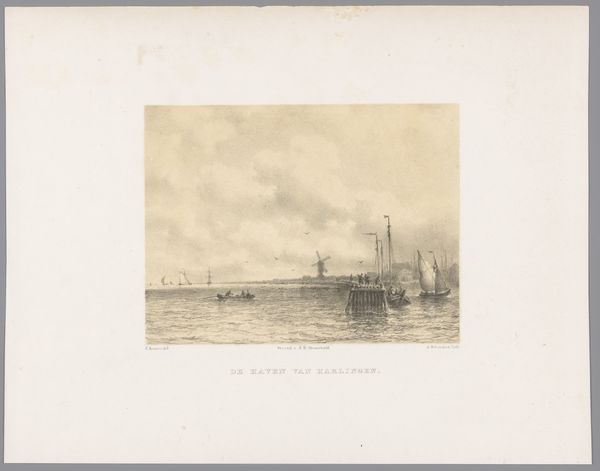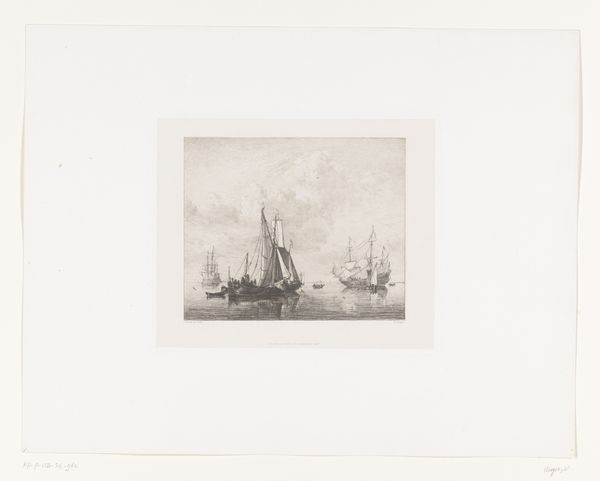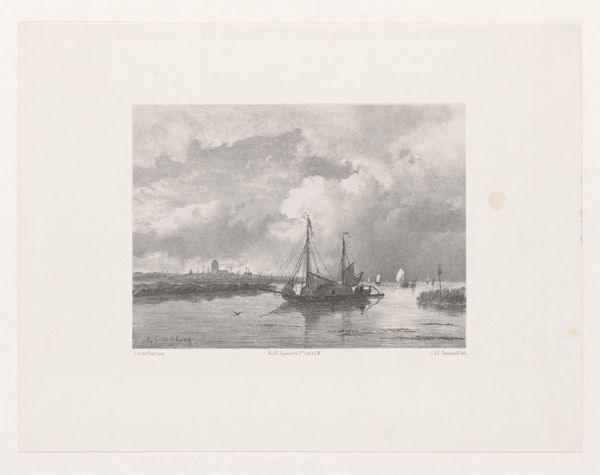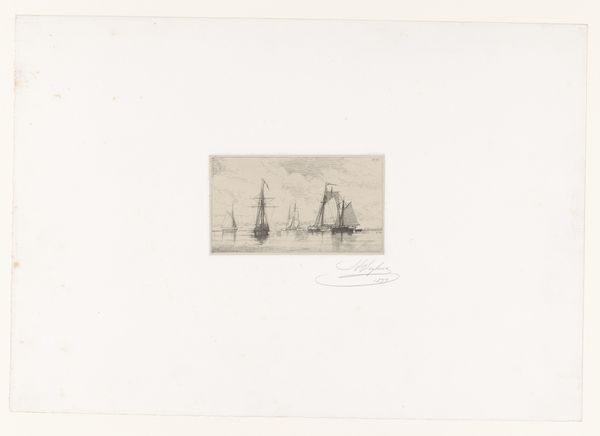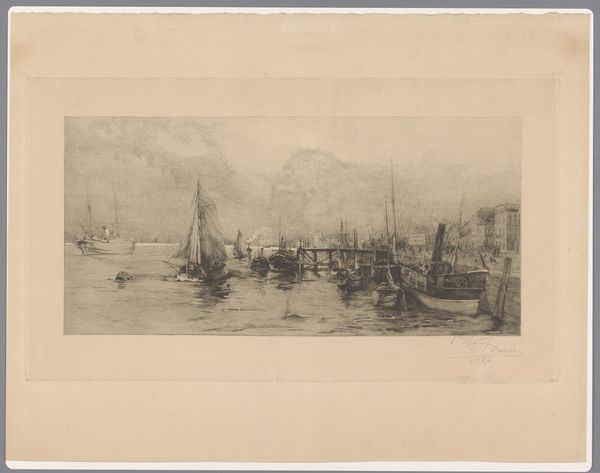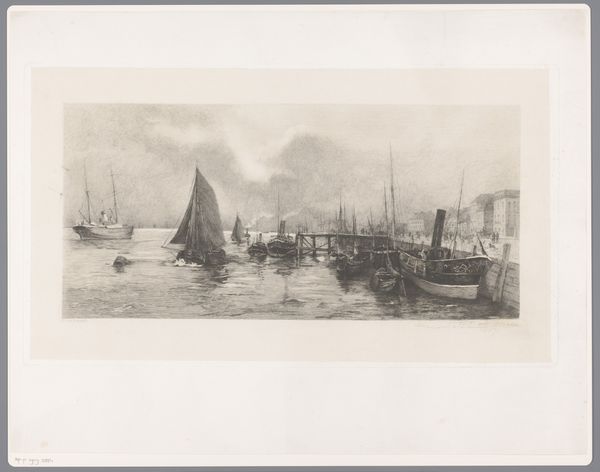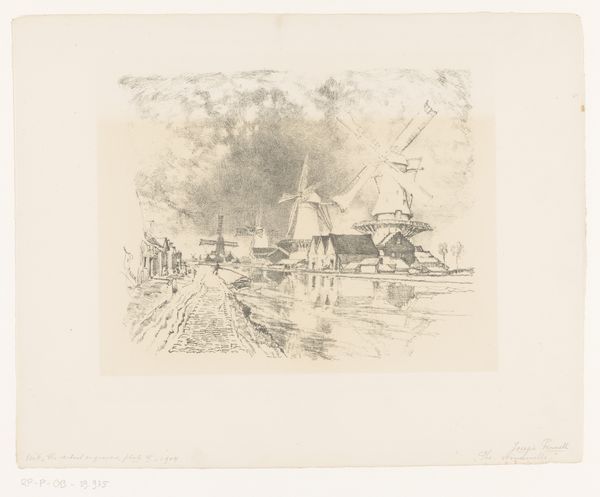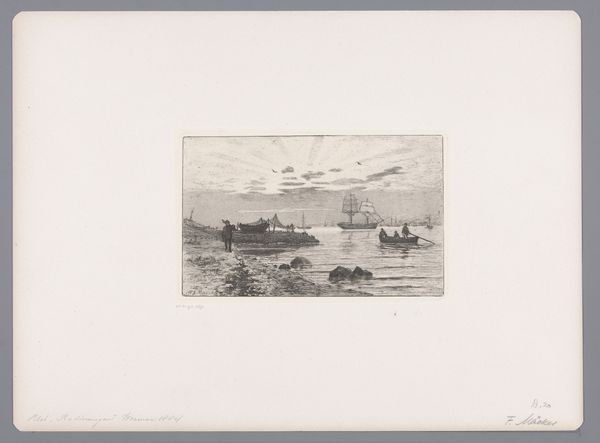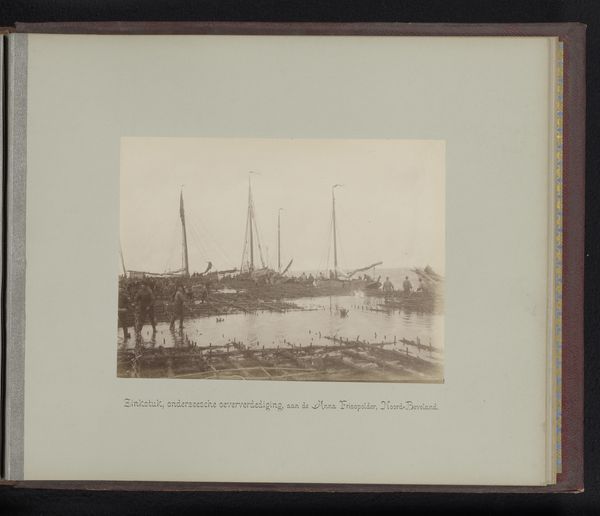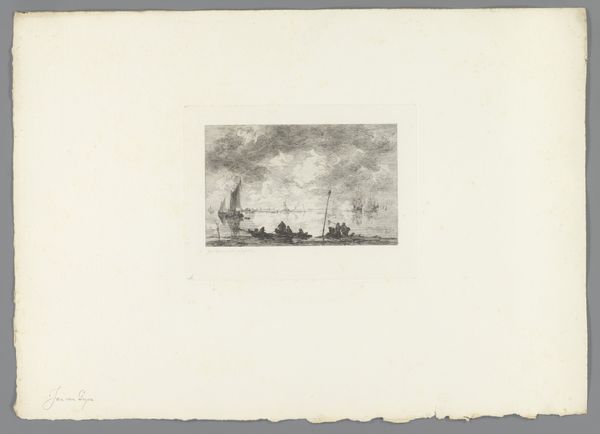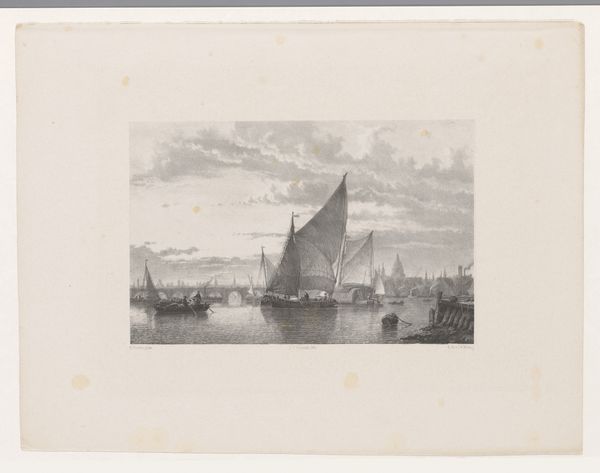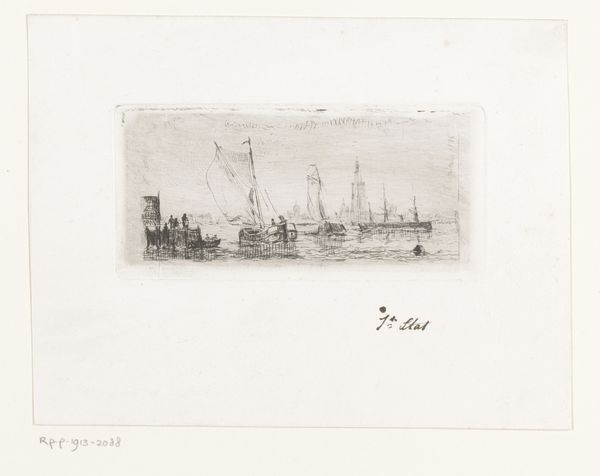
Fotoreproductie van het schilderij 'De binnenkant te Amsterdam' door Johan Conrad Greive before 1871
0:00
0:00
print, photography, gelatin-silver-print
#
dutch-golden-age
# print
#
landscape
#
photography
#
gelatin-silver-print
#
cityscape
Dimensions: height 118 mm, width 177 mm
Copyright: Rijks Museum: Open Domain
Editor: Here we have a gelatin silver print from before 1871 titled "Fotoreproductie van het schilderij 'De binnenkant te Amsterdam' door Johan Conrad Greive," currently residing at the Rijksmuseum. The photograph features a cityscape dominated by boats and water, creating a rather serene and muted atmosphere. What strikes you about this image? Curator: The photograph, in its reproduction of Greive's painting, becomes an interesting site for examining the evolving relationship between art, technology, and access. Think about the material implications: paint versus photographic chemicals, canvas versus gelatin silver. Photography, in its capacity to reproduce, democratizes art. But what does it *do* to the aura of the original? Does the photograph enhance or diminish Greive's labor? Editor: That’s a fascinating point about democratization. So, is the value then not necessarily in the artistry of the image itself, but in its ability to disseminate the original work? Curator: Exactly! Consider the socioeconomic context. Who could afford a painting by Greive? Who could afford a print? Photography offered a wider audience visual access. And what labor went into making the reproduction? The photographer, Binger & Chits, become essential in mediating our experience with Greive’s painting. What does the shift in materiality tell us about changing artistic values at this time? Editor: So, it's about understanding how materials and methods influence accessibility and perceptions. I suppose I hadn’t really considered the implications of reproducibility in that way. Curator: Indeed. Looking closely at the processes behind the image encourages us to move beyond questions of aesthetic value and focus instead on the social and economic conditions that shape our understanding of art. Perhaps we should contemplate on the future of art considering technological advancements. Editor: Absolutely, this has opened my eyes to how the means of production deeply impact the meaning we derive from art.
Comments
No comments
Be the first to comment and join the conversation on the ultimate creative platform.
